Marie Zimmermann's career is ascendant; like her life, it builds and builds. She devises innovative techniques, such as ageless patinas, and gains high national stature for her major works. As she approaches twenty, Marie's creative bent begins to emerge. She takes courses at the Art Students League in New York, and is inspired by metalsmith courses at Pratt Institiute in Brooklyn. About this time, she argues with her father, who wants her to become a doctor. They are estranged for about a year, but little 5-foot Marie wins the tug of wills and begins her career as a metalsmith.
Almost immediately she is noted for her work and output in different mediums (decorative iron, metals and alloy metals, rare gems, ivories, coral, pearl, etc.). She opens her studio in the National Arts Club in 1910 (about the time the house she helps to design is being planned in Pennsylvania). Her Montgomery Ward (Thorne) gates in Chicago are well-known. She participates in numerous exhibits at the Art Institute of Chicago, and in Detroit.
The 20s and 30s are her most productive years. In the late 30's Marie has 2 major week-long exhibits in Charleston, SC, and Santa Barbara, CA, showing a broad array of her works. Both exhibits are commercially unsuccessful, likely because it is still the Depression. Unlike Louis Comfort Tiffany and Gustav Stickley, who went on to create successful companies out of their designs, Marie, because of her wealth, and certainly under emotional stress from family loss, and under pressure from the government for better bookkeeping, decides to retire in 1940, closes her studio, sells her brownstone, and goes to her beloved farm.
This decision brings on a long period of obscurity for Marie Zimmermann in the world of decorative arts. Forty years later though, her grand nephew Jack walks into the Metropolitan Museum of Art in New York and asks to see its record on Aunt Marie, because he has heard there are a few pieces in its holdings. The Museum dismisses Jack's inquiry, but he insists, and gets it to admit that there are two pieces in the colection. His reward is a 1985 exhibit featuring Marie Zimmermann, "Art and Craft in Metal".
Jack continues to pursue the resurrection of his great aunt's reputation in American decorative arts, wanting to place certain of her major works in museums around the country, and to produce a major book on her life and amazing creative achievements.
Marie remains relatively obscure, but Jack is heartened by the formation of Friends in 1997; then there are two events that open up the true extent of the Marie Zimmermann legacy...In 2005, Eda Egli's son (Eda was Marie's secretary) sells at auction in Lambertville, NJ, the Egyptian box. The opening price is $50,000 and the bidding goes over $100,000. The silent and winning bid is the Metropolitan Museum of Art...Then in 2012, the American Decorative Arts 1900 Foundation, in cooperation with Jack, publishes "The Jewelry and Metalwork of Marie Zimmermann", 384 pages of the most direct revelations of the range and power of her career.
A subjective list of Marie Zimmermann's 18 major works reveals a great versatility in her choice of subjects and materials. Her sculptures, St. Francis and the Birds in silver, and The Eagle and the Osprey in bronze, are outstanding examples of perspective and detail. Impressive also is her work in iron and bronze on the Ward-Thorne Gates in Chicago and in the Rudolph A. Metz Columbarium in Bronx, NY, at the other end of the spectrum.
Marie's decorative works in metal and jewelry pieces, by far her largest output, show wide-ranging and individual achievements, and are honored in three major museums.
Six are in the Met - the Egyptian Box, the Greek Pyxis Jar, the Rhodium Plated Silver Bowl, the Gilded Copper Flower Arranger, the Gold Enamel Necklace, and the Gold and Coral Necklace.
The Covered Chalices (on the cover of the book) are in the Carnegie Museum of Art in Pittsburgh, and the Dold Plated Copper Covered Box on Stand is in the Museum of Fine Arts in Boston.
Marie's other great pieces in the list of 18 show her amazing range: the Green Gold Plated Silver Persian Box; the gilded copper Egypto-Arabic Mantel Set;the Copper and Jade Covered Box; the Seed Pearl Necklace (on the inside covers of the book); the Chinese and Dragon Head Bracelets and the Bejewelled Dagger and Scabbard.
Artist Marie Liu's Interpretations
Marie Liu paints about the NE Pennsylvania region in which she lives. Its beautiful and abundant natural areas (including the Delaware Water Gap National Recreation Area, where the Zimmermann house is located), numerous waterfalls, woodland creeks and mighty rivers as well as the interesting and historical people who have called this region home (including Marie Zimmermann) all provide her with endless inspiration for her oil painting.
Since becoming familiar with Zimmermann and her metalwork, Marie Liu has been painting a series of still life paintings featuring the metal art objects created by Zimmermann. Initially pairing them with the flora and fauna of the region, reflecting a specific time of year, she now also paints the objects within the landscape - as if the viewer were to discover these treasures while traveling through the landscape, as Zimmermann surely would have drawn on nature for inspiration, having been an outdoor enthusiast.
All of the paintings measure 12x16 inches, are framed in an antiqued silver frame and are priced at $350.
These and other images of Marie Liu's paintings can be seen at her website www.mliuart.com and at the Artery Gallery in Milford, PA.
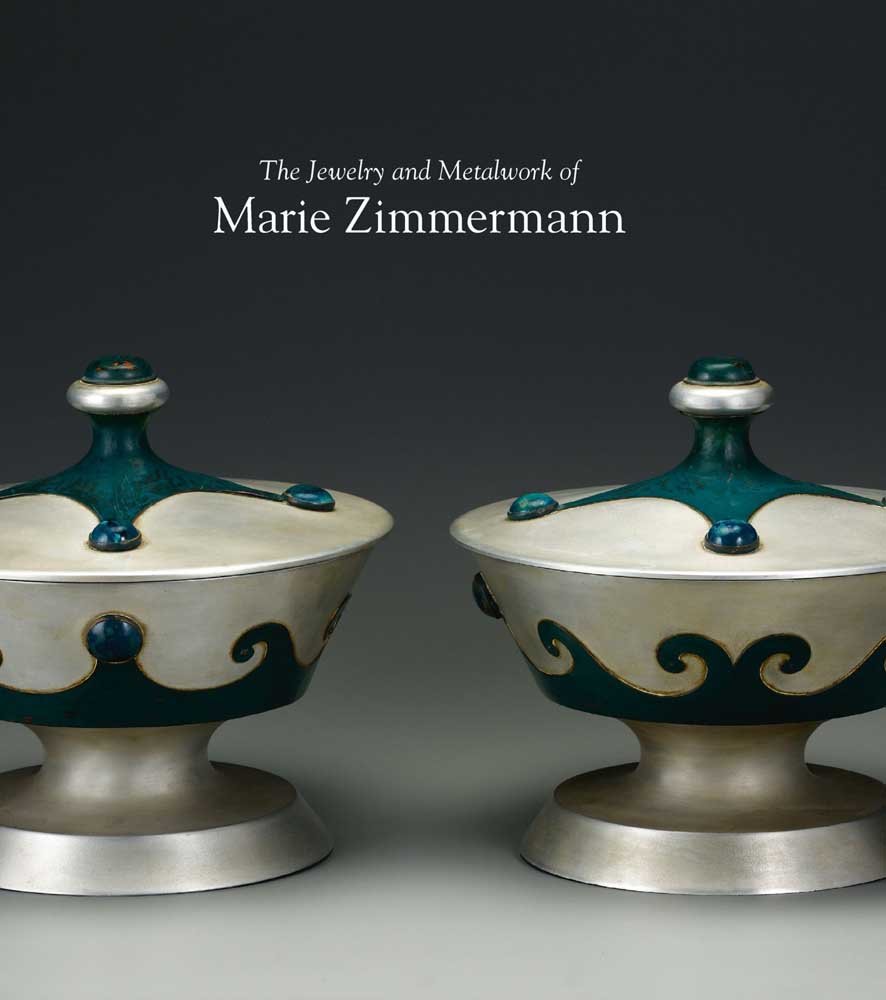
THE JEWELRY AND METALWORK OF MARIE ZIMMERMANN
The American Decorative Art 1900 Foundation and Yale University Press, 384 Pages, over 500 photographs. Available at AMAZON.COM.


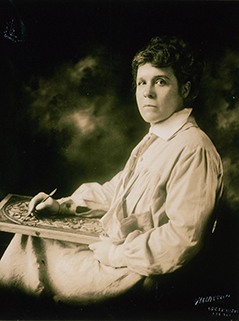
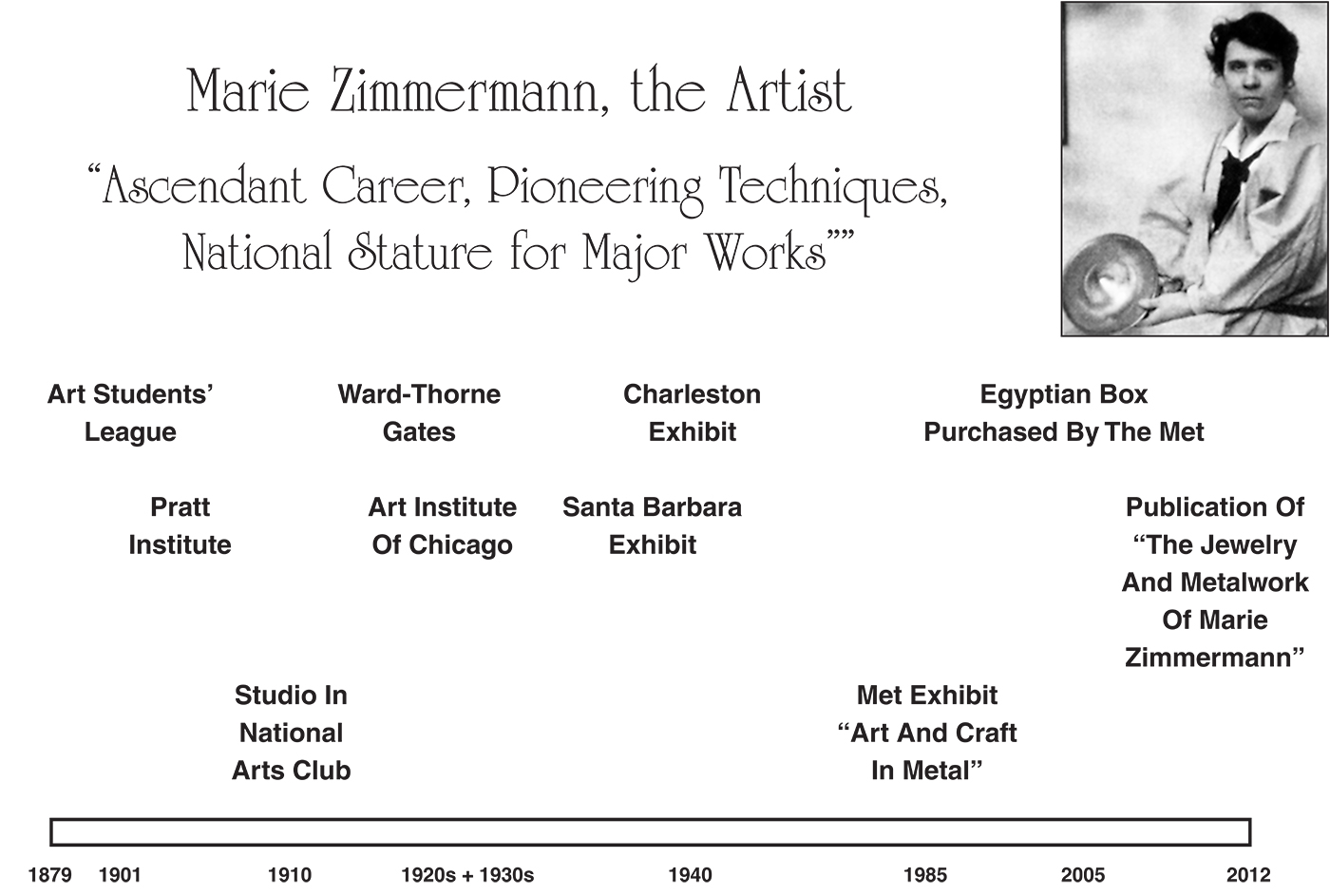
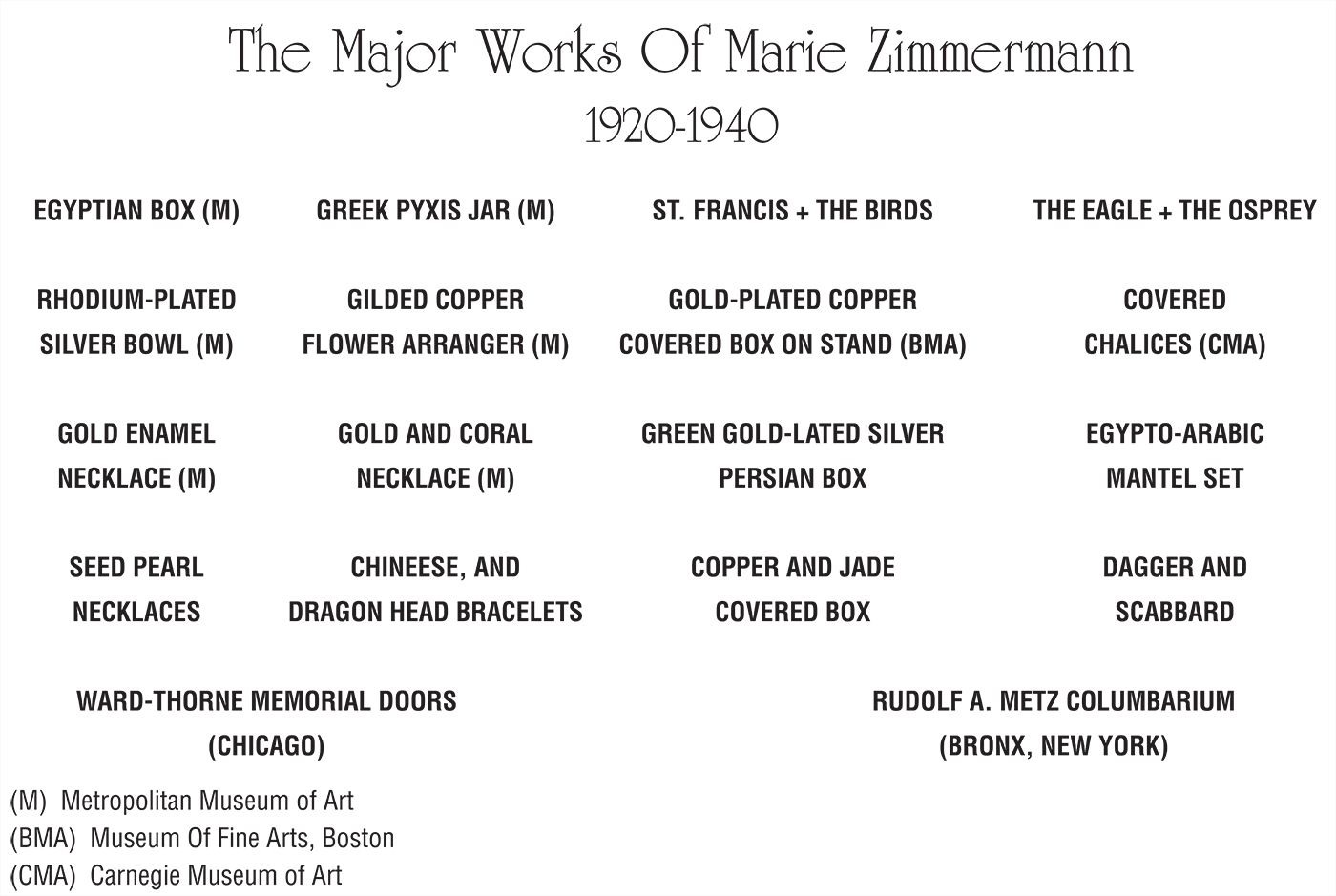
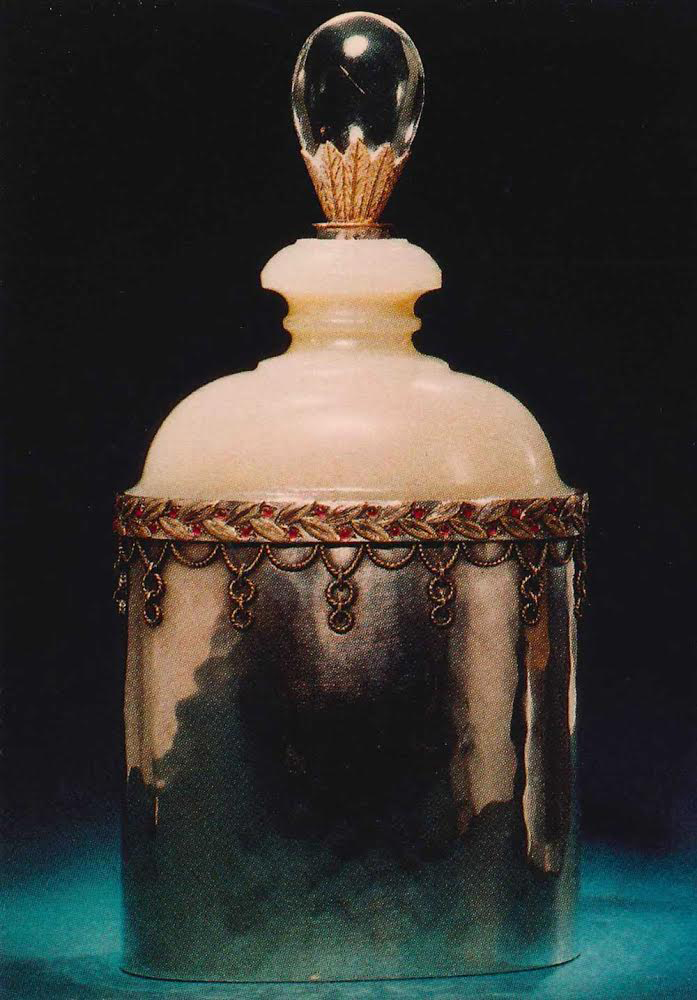 Click to View Photos
Click to View Photos